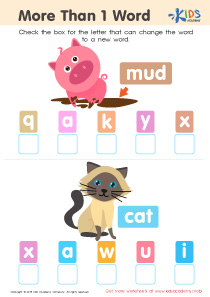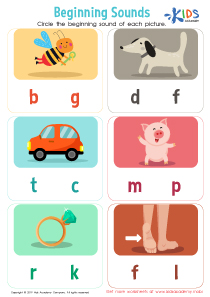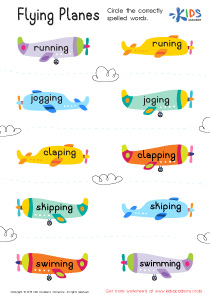Ending Sounds Worksheets for Ages 3-8
7 filtered results
-
From - To
Discover engaging Ending Sounds Worksheets tailored for children aged 3-8. Our expertly crafted worksheets are designed to boost young learners' phonics skills, helping them identify and pronounce ending sounds in words. These educational tools are perfect for both classroom and home use, featuring fun activities, vibrant images, and varied exercises to keep kids entertained while reinforcing their literacy foundations. Give your children the head start they need in reading and pronunciation with these well-structured, age-appropriate resources. Visit Kids Academy to find the ideal ending sounds worksheets and make learning an enjoyable adventure!
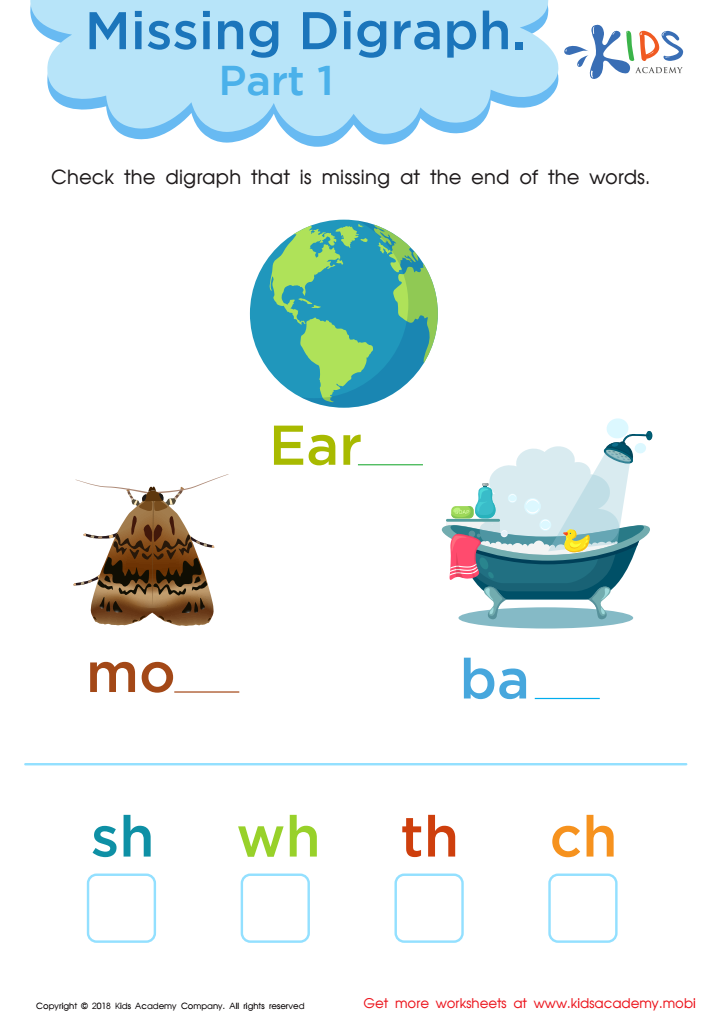

Missing Digraph: Part 1 Worksheet
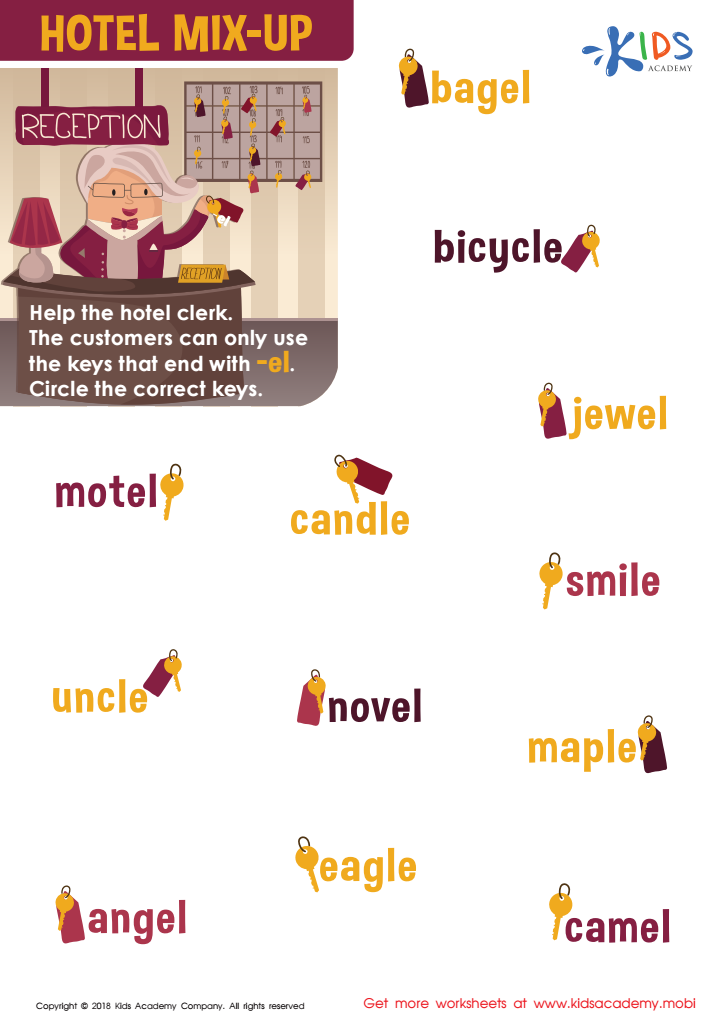

Hotel Mix-up Worksheet
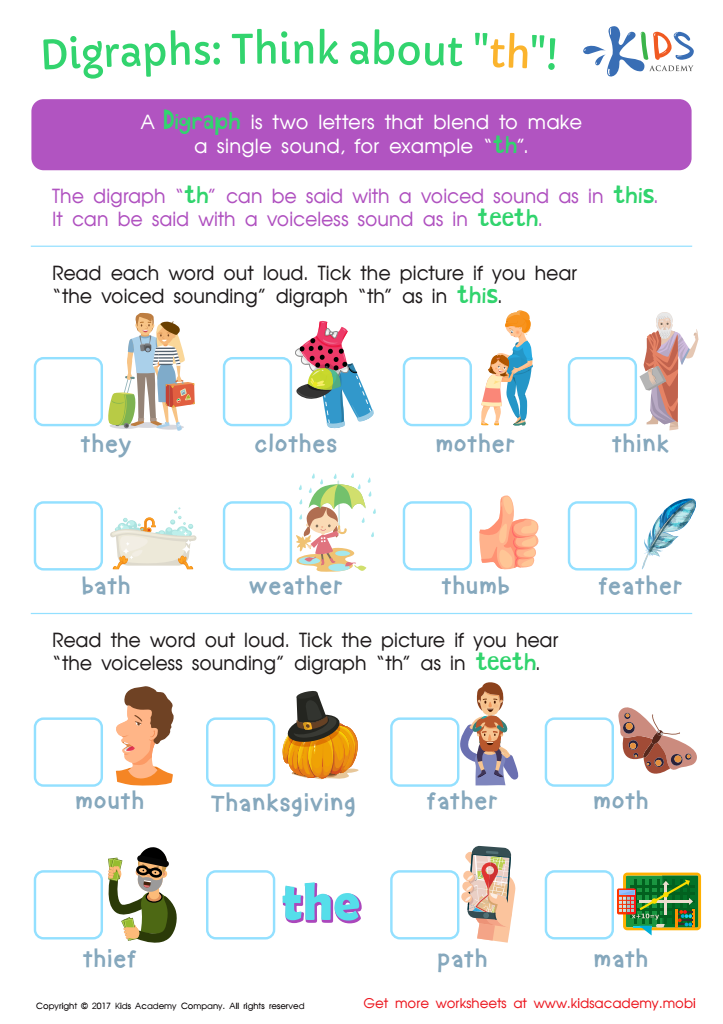

Digraphs: Think About "th" Worksheet
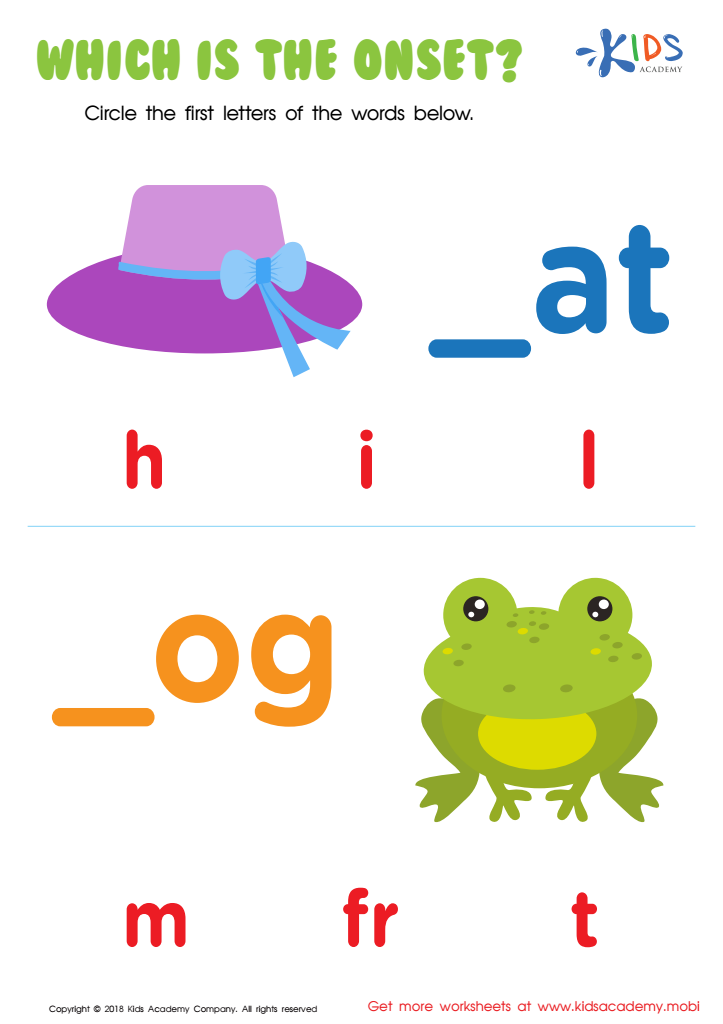

Which Is the Onset? Worksheet
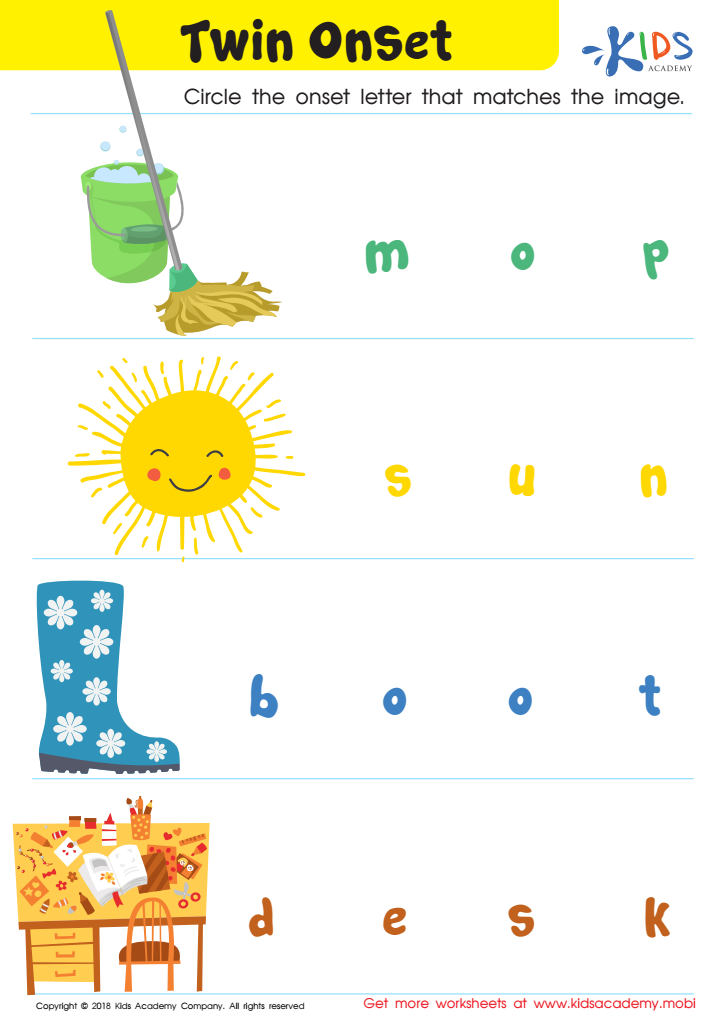

Twin Onset Worksheet
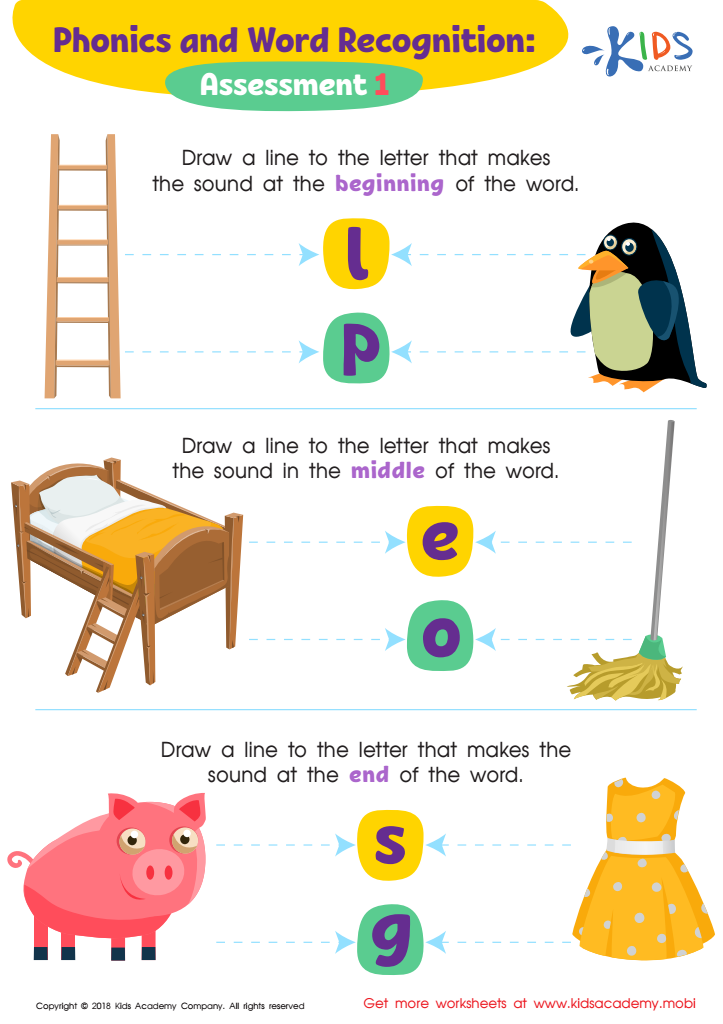

Phonics and Word Recognition: Assessment 1 ELA Worksheet
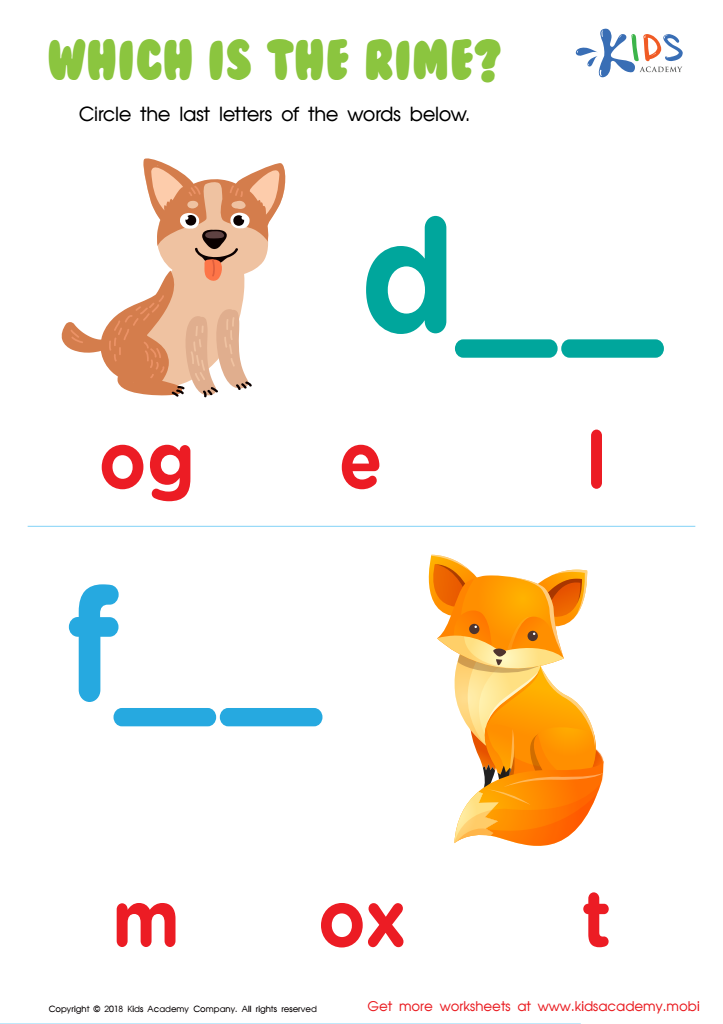

Which Is the Rime? Worksheet
Parents and teachers should place significant importance on teaching ending sounds to children aged 3-8 because it forms a crucial foundation for literacy development. Ending sounds are one of the primary building blocks of phonemic awareness, the ability to recognize and manipulate sounds in words. This skill is fundamental for reading success since it helps children decode new words and enhances their spelling abilities.
Understanding ending sounds allows children to differentiate between words with similar beginnings, aiding in vocabulary expansion. For instance, knowing that "cat" and "cap" end differently helps a child understand that these are distinct words with unique meanings.
Moreover, grasping ending sounds contributes to better pronunciation and oral language skills. Children become more effective communicators when they can accurately identify and replicate the sounds within words.
Focusing on ending sounds also boosts children's confidence as readers. Successfully identifying and working with these sounds can lead to early reading milestones, such as reading simple stories, which fosters a love for reading and learning more broadly.
Ultimately, giving attention to ending sounds equips children with essential skills for their academic journey. Without this foundational knowledge, children may face difficulties in higher-level literacy tasks, underscoring the importance for parents and teachers to nurture this skill early on.
 Assign to My Students
Assign to My Students






